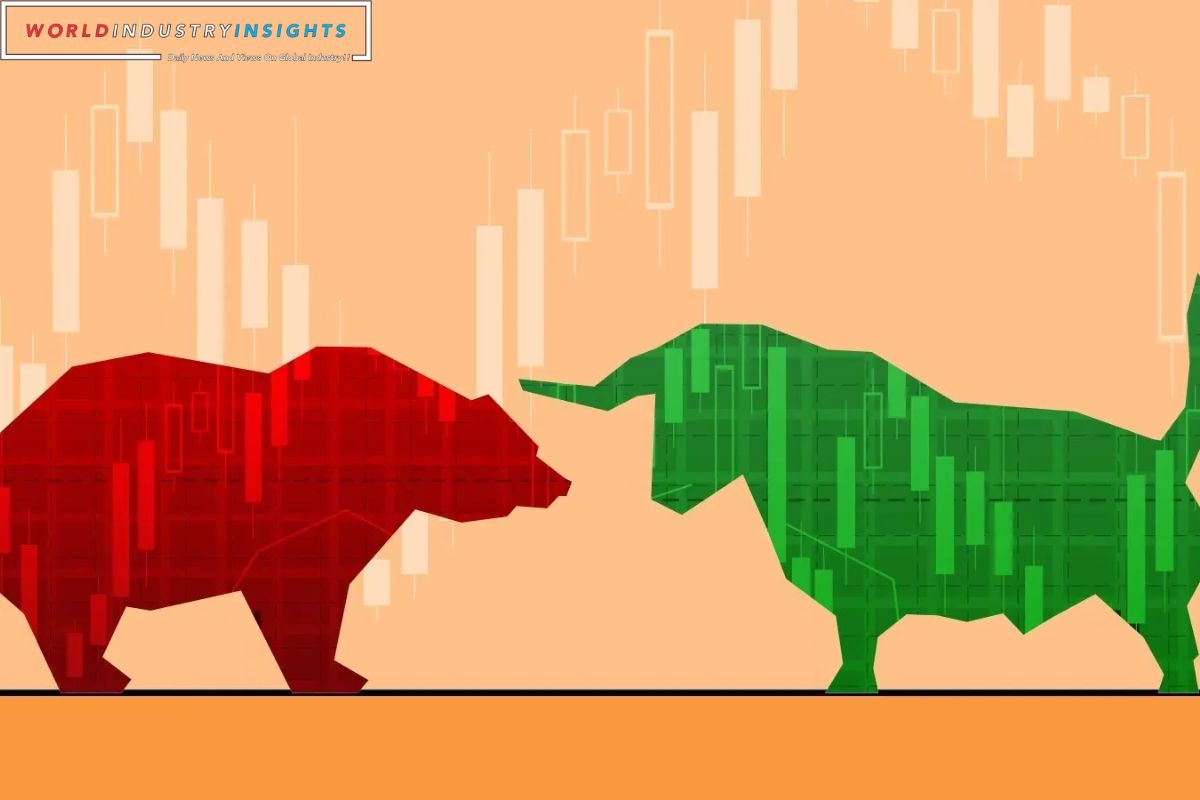Wall Street Optimism Wanes: As Wall Street optimism begins to wane, Asian markets find themselves grappling with the consequences of a global sell-off. The once promising outlook for investors now seems to be overshadowed by a series of influences that have left market participants on edge.
From the foreign exchange market to the movement of cryptocurrencies, the uncertainty surrounding these assets has added further pressure to an already volatile situation. While oil prices have managed to claw back some gains after a previous decline, the overall market sentiment remains cautious as investors anxiously await the outcome of upcoming events and economic data.
With so much at stake, the question on everyone’s mind is: will the Asian markets weather this storm or will the sell-off continue to wreak havoc on the global landscape?
Key Takeaways
- Nasdaq declines by 1.6% and S&P 500 retreats from record highs
- Apple’s stock downgrade raises concerns
- Tesla loses top EV maker spot
- Climb in Treasury yields diverts attention from stocks
Asian shares are experiencing a significant decline as global markets plummet amidst geopolitical tensions and increasing uncertainty. MSCI’s Asia-Pacific index has dropped 1.1%, with South Korean and Australian stocks sliding, and Hong Kong’s Hang Seng falling 1%.
This decline is a clear reflection of the global sell-off that has gripped the markets, leaving investors grappling with the consequences. The primary driver behind this downturn is the escalating geopolitical tensions, particularly in the Middle East. As uncertainty looms, investors are becoming increasingly cautious, causing a shift towards risk aversion.
The decline in Asian shares is a stark reminder of the interconnectedness of global markets and the vulnerability that geopolitical events can pose. This serves as a wake-up call for investors to reassess their strategies and brace themselves for further turbulence in the coming days.
Also Read: Wall Street 2024 Top Forecaster Predicts And Market Trends
Wall Street Optimism Cools Amidst Various Influences
As global markets face mounting pressures and uncertainties, Wall Street’s optimism begins to wane amidst a multitude of influential factors. The recent decline in the Nasdaq by 1.6% and the S&P 500 by 0.6% reflects a retreat from record highs, signaling a loss of confidence in the market.
Several key factors have contributed to this cooling of optimism:
- Apple’s stock downgrade: The downgrade of Apple’s stock has raised concerns about the technology sector’s ability to sustain its growth trajectory, leading investors to question the overall health of the market.
- Tesla losing top EV maker spot: Tesla’s loss of its top position as the world’s leading electric vehicle maker has sparked doubts about the company’s long-term prospects, adding to the unease among investors.
- Climb in Treasury yields: The recent increase in Treasury yields has made bonds more attractive to investors, diverting their attention away from the stock market and undermining Wall Street’s buoyancy.
These influential factors have collectively dampened Wall Street’s optimism, creating an environment of caution and uncertainty among investors.
Foreign Exchange Market and Cryptocurrency Movement
The global foreign exchange market and cryptocurrency movement have become hot topics of discussion amidst recent market developments.
As the Wall Street optimism wanes and Asian markets grapple with a global sell-off, the foreign exchange market is experiencing significant fluctuations. The U.S. dollar is strengthening, while the Euro is falling, and the Japanese yen is facing losses. These movements reflect the uncertainty and volatility in the global economy, as investors seek safe-haven currencies amid the market turmoil.
Meanwhile, in the world of cryptocurrencies, Bitcoin is making headlines as it surges to $45,205, nearing a 21-month high. This remarkable rise in Bitcoin’s value is attracting attention from investors and speculators alike, fueling further debate about the future of digital currencies and their potential role in the financial landscape.
Oil Prices Experience Marginal Gains After Previous Decline
Amidst the ongoing global sell-off and fluctuations in the foreign exchange market and cryptocurrency movement, oil prices have managed to experience marginal gains after a previous decline. This surprising turn of events has left investors intrigued and hopeful for a potential rebound in the energy sector.
Despite the overall bearish sentiment in the market, oil prices have shown resilience and demonstrated their ability to defy the odds. Here are three key factors contributing to the marginal gains in oil prices:
- Geopolitical tensions: Recent developments in the Middle East have raised concerns about potential disruptions in oil supply, leading to a slight increase in prices.
- OPEC production cuts: The Organization of the Petroleum Exporting Countries (OPEC) and its allies have implemented production cuts to balance the market, which has helped support oil prices.
- Economic recovery: As major economies around the world continue to recover from the impact of the pandemic, the demand for oil is gradually increasing, providing support for prices.
While the global sell-off continues to dominate headlines, the modest gains in oil prices offer a glimmer of hope for investors seeking stability and potential profitability in the energy market.
Market Focus on Upcoming Events and Economic Data
Market participants are closely focused on upcoming events and economic data as they seek valuable insights and guidance amidst geopolitical concerns and stock market volatility. With attention shifting to the Federal Reserve’s minutes for the December policy meeting, expectations of aggressive policy easing have heightened.
This, accompanied by key data releases such as the ISM survey, job openings, private payrolls report, and jobless claims results, has created an environment of cautious anticipation. The overall market sentiment reflects the need for clarity and guidance in these uncertain times. To help convey the intensity of this focus, let’s take a look at the table below:
| Upcoming Events | Expected Impact | Reason for Focus |
|---|---|---|
| Fed minutes release | High | Insight into future policy direction |
| ISM survey | Medium | Indication of economic activity |
| Job openings | Medium | Measure of labor market health |
| Jobless claims | Low | Indicator of economic stability |
These upcoming events and economic data points are crucial in shaping market sentiment and providing valuable insights for market participants seeking mastery in navigating these turbulent times.
Conclusion Of Wall Street Optimism Wanes
Asian markets are grappling with a global sell-off as Wall Street optimism fades.
The decline in Asian shares can be attributed to various influences, including the foreign exchange market and cryptocurrency movement.
Additionally, oil prices have experienced marginal gains after a previous decline.
Investors are now focusing on upcoming events and economic data to assess market trends.
This situation calls for cautious optimism as the global market landscape continues to evolve.
Our Reader’s Queries
Will 2024 be a good year for the stock market?
According to Tom Lee, an expert at investment research firm Fundstrat, the S&P 500 (SNPINDEX: ^GSPC) index is expected to increase by 9% in 2024, reaching 5,200. Lee also predicts a greater than 50% chance of the index experiencing double-digit growth this year. Additionally, he notes the possibility of a 30% jump in the index.
What is the Wall Street rule?
The Wall Street rule was implemented to prevent shareholders from having too much control over corporate activities. Additionally, it clarifies that the company’s insurance does not provide protection for individual investors and shareholders. This regulation aims to maintain a balance of power within organizations and safeguard the interests of all stakeholders.
When was Wall Street at its peak?
Between August 1921 and September 1929, the Dow Jones Industrial Average skyrocketed from 63 to 381, a six-fold increase. However, this euphoric rise was short-lived. Despite economist Irving Fisher’s declaration that stock prices had reached a “permanently high plateau,” the market eventually crashed, leading to a catastrophic bust.
What is the January effect on Wall Street?
The January Effect is a seasonal trend where stocks tend to increase in value during the first month of the year. This phenomenon is believed to happen because investors sell off their underperforming stocks in December to offset their taxes, and then purchase new stocks in January. This strategy is known as tax-loss harvesting and is thought to contribute to the January Effect.




